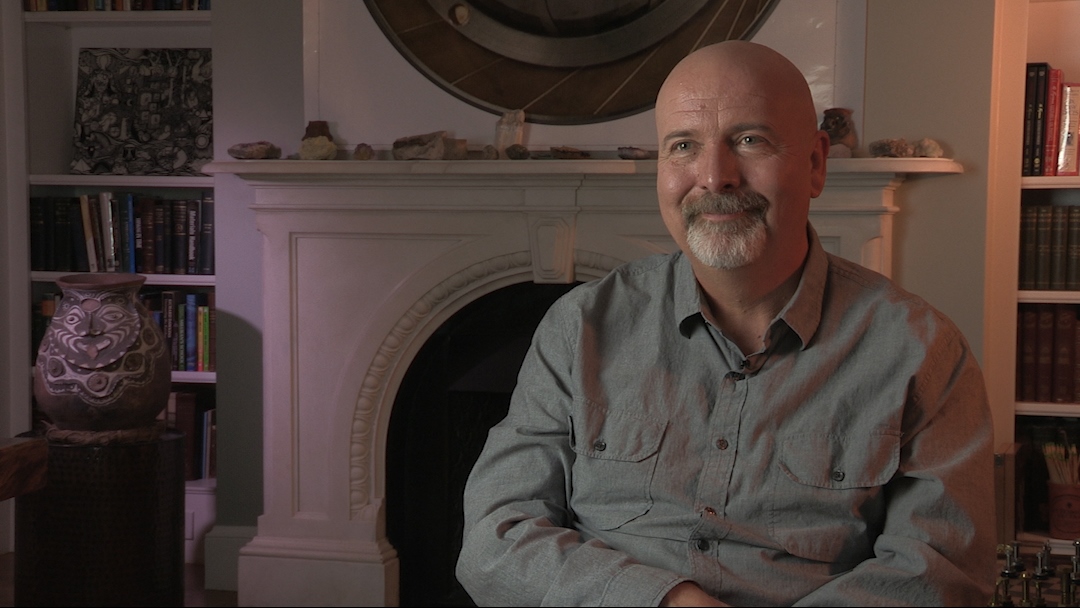NEXT STORY

The evolution of artificial intelligence
RELATED STORIES

NEXT STORY

The evolution of artificial intelligence
RELATED STORIES


|
Views | Duration | |
|---|---|---|---|
| 91. Why I started making parallel computers | 149 | 01:28 | |
| 92. The evolution of artificial intelligence | 163 | 03:12 | |
| 93. Not realising the importance of our inventions | 129 | 02:57 | |
| 94. Why the Internet is designed with security flaws | 151 | 02:47 | |
| 95. Hacking the elevator's controller | 122 | 02:14 | |
| 96. The culture of inventing | 148 | 03:00 | |
| 97. My close encounter with an elephant | 114 | 02:40 | |
| 98. The benefits of owning a fire engine truck | 118 | 02:15 | |
| 99. A ride with drunk Spanish Tall Ship officers | 107 | 04:57 | |
| 100. A computer made out of Tinkertoys and escutcheon pins | 123 | 02:35 |


When I was a graduate student I was very interested in making a thinking machine, artificial intelligence. But I knew that the computers that we had available at the time were not nearly powerful enough to do it. So I had to make a computer that was thousands of times more powerful. Actually it turns out I had to make a computer that was millions of times more powerful. But I started by making one thousands of times more powerful. And I knew that, you know, to get neural networks and things we needed much more computing power than we were going to get.
And so that's why I started making parallel computers, was to make a thinking machine with them. So that's why my company was called Thinking Machines. And indeed, eventually, that method did work. It turns out they needed to be even more powerful, but pretty much exactly the methods that we were trying for training computers with neural networks, are pretty much exactly the ones that are working now. And the parallel computers are pretty much exactly like the ones I made. But they just needed to be much faster. So technology had to improve another factor of a thousand before it became possible. But it's interesting how close the ideas are of how that works. Or how they worked, to what we were trying to do then.
W Daniel Hillis (b. 1956) is an American inventor, scientist, author and engineer. While doing his doctoral work at MIT under artificial intelligence pioneer, Marvin Minsky, he invented the concept of parallel computers, that is now the basis for most supercomputers. He also co-founded the famous parallel computing company, Thinking Machines, in 1983 which marked a new era in computing. In 1996, Hillis left MIT for California, where he spent time leading Disney’s Imagineers. He developed new technologies and business strategies for Disney's theme parks, television, motion pictures, Internet and consumer product businesses. More recently, Hillis co-founded an engineering and design company, Applied Minds, and several start-ups, among them Applied Proteomics in San Diego, MetaWeb Technologies (acquired by Google) in San Francisco, and his current passion, Applied Invention in Cambridge, MA, which 'partners with clients to create innovative products and services'. He holds over 100 US patents, covering parallel computers, disk arrays, forgery prevention methods, and various electronic and mechanical devices (including a 10,000-year mechanical clock), and has recently moved into working on problems in medicine. In recognition of his work Hillis has won many awards, including the Dan David Prize.
Title: Why I started making parallel computers
Listeners: George Dyson Christopher Sykes
Christopher Sykes is an independent documentary producer who has made a number of films about science and scientists for BBC TV, Channel Four, and PBS.
Tags: Thinking Machines
Duration: 1 minute, 28 seconds
Date story recorded: October 2016
Date story went live: 08 August 2017